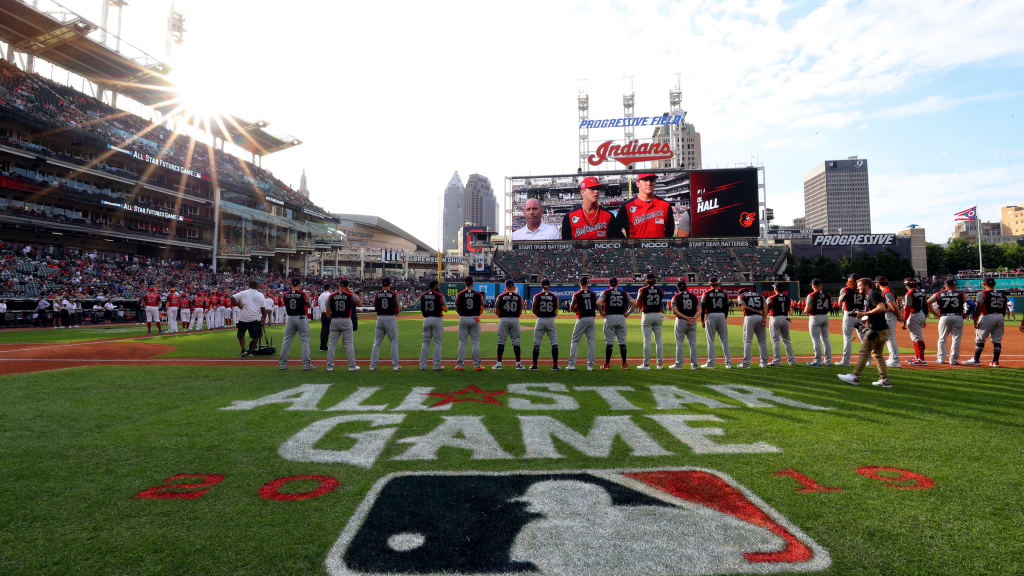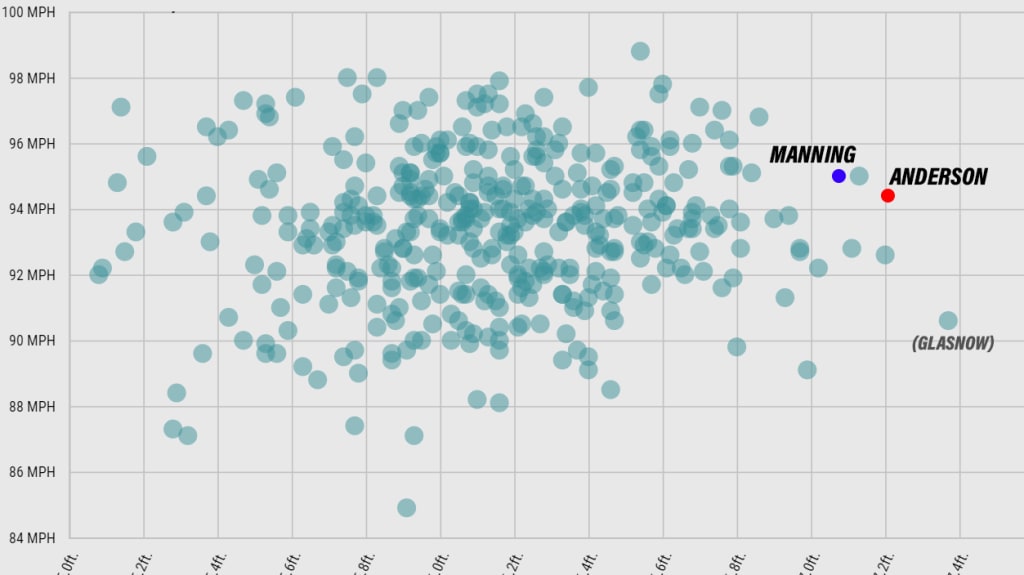
Last year in the Futures Game, you saw Pete Alonso hit a massive blast. Danny Jansen hit one too, while Fernando Tatis Jr. had two hits. You may have noticed that each are succeeding in the big leagues right now, to say nothing of other Futures Games participants like Touki Toussaint, Mitch Keller and Yoan Lopez, so you can understand why such attention is focused upon this All-Star Sunday event.
For many who aren't near Minor League affiliates, it's their first chance to see baseball's next wave of stars on television. For analysts, it might be the first time to see Statcast data, getting into the skills of what these guys can really do.
Here's who stood out in Sunday night's showcase.
Pitching
Toronto's Nate Pearson is already somewhat legendary in the Minors for his elite fastball -- it's rated as a 75 on the 20-80 scouting scale at MLB Pipeline -- and he did nothing to disappoint in his single inning of work. Pearson threw seven fastballs, and the average was 100.4 MPH. He threw the four hardest pitches of the game, ranging from 101.2 MPH to 101.7 MPH.
The other prospect to hit triple digits was Miami's Sixto Sanchez, acquired as one of the main pieces in last winter's J.T. Realmuto deal. Sanchez was the next pitcher on the mound after Pearson, and he brought similar heat -- averaging 99.3 MPH and maxing out at 100.2 MPH.
We also saw a pair of pitchers showing elite extension, which shows how far in front of the mound a pitch is released. (Remember: 60-feet-6-inches is a suggestion, not a requirement.) Atlanta's Ian Anderson and Detroit's Matt Manning each topped 7 feet of extension on their four-seam fastballs, which, as you can see, puts them in rarified air:

It's also worth noting San Diego's Luis Patiño, who averaged 2,531 rotations per minute on his four-seam fastball. That would have put him in the Top 20 in the Majors this year, among those who have thrown at least 100 four-seamers.
Hitting
Evan White, the No. 17 overall pick in the 2017 Draft by the Mariners, stepped up in the second inning and lined out to left field, hard. The exit velocity on the F7 ended up being 112.2 mph, and that's a big deal, because it's not just good, it's elite. Only 0.5% of batted balls in the Majors this year -- fewer than 400 -- have been hit that hard. When they do, they're hitting .779 collectively; only 46 hitters have done it more than twice. It's a skill, an important one.
A trio of other hitters topped 105 mph. The only home run of the game came in the seventh inning, when Texas prospect Sam Huff, the eventual Futures Game Most Valuable Player -- crushed a Ben Bowden pitch a projected 418 feet -- at 109.3 mph off the bat -- deep to left field. Minnesota's Royce Lewis got up to 108.8 mph on a sixth-inning single, and Tampa Bay's Wander Franco -- the 18-year-old No. 1 prospect in baseball -- reached 107.7 mph on a fourth-inning single.
Speed
White Sox prospect Luis Robert has 21 stolen bases at Double-A this year, and in the first inning, he showed why. On what was an otherwise harmless groundout to second baseman Isan Diaz, Robert hit 31.3 feet per second as his top Sprint Speed. The context there is that 27 ft/sec is the Major League average, and anything north of 30 is considered elite.
Others to hit the elite 30 ft/sec mark: Robert's Birmingham teammate Nick Madrigal, who hit 30.1 ft/sec on a fourth-inning groundout; Boston's Jarren Duran, who got up to 30.1 ft/sec on a groundout, and Atlanta prospect Christian Pache, who got up to 30 ft/sec, also on a groundout.
Fielding
In the fourth inning, San Francisco catcher Joey Bart displayed a 1.97 second pop time -- slightly better than the Major League average of 2.00 seconds -- to throw out Franco at second base.
Cincinnati's Taylor Trammell, when he wasn't trying to steal home, was making magic happen in the outfield. Thing is, it's the kind of magic you might not have noticed. On that White hard liner we noted above, Trammell made what looked like an easy catch. It was not an easy catch. It actually had a 55% Catch Probablity, which means it's the kind of opportunity -- based on the 38 feet he had to go in 3.1 seconds -- that's made only about half the time.
What made it look so easy? Trammell had an outstanding jump on the play, covering +6.2 more feet than league average in the first three seconds. It's the kind of thing that's meant to measure reactions and routes, not so much top running speed, and that's why it looked so easy. It's because Trammell was so good that he made it look that easy.
